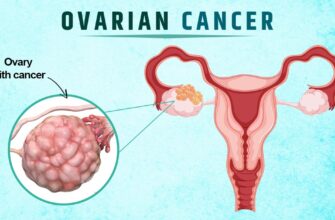Knee osteoarthritis, a condition marked by persistent pain, stiffness, and reduced mobility, affects millions worldwide. For many, the journey to relief often seems fraught with complex treatments and daunting medical procedures. But what if the most effective solution wasn`t found in a pill bottle or an operating room, but in the simple act of putting one foot in front of the other, or gliding through water? Recent, robust scientific findings suggest that the most uncomplicated forms of physical activity are, in fact, remarkably potent allies in the fight against knee osteoarthritis pain.
The Scientific Revelation: Unpacking the Evidence
A comprehensive analysis published in The BMJ, a highly respected medical journal, has illuminated this profound truth. Researchers meticulously reviewed an impressive 217 clinical trials conducted over three decades, involving more than 15,000 individuals suffering from knee osteoarthritis. Their mission: to compare the efficacy of various exercise interventions, from stretching to strength training. The overwhelming conclusion? Aerobic activities – specifically walking, swimming, and cycling – consistently delivered the most significant and sustainable improvements in pain reduction and mobility, both in the short and long term. It appears the body often holds the most elegant solutions, if only we`re willing to move it.
Beyond the Gym: The Accessible Prescription
What makes this discovery particularly compelling is the sheer accessibility of these activities. There`s no need for specialized equipment (beyond perhaps a bicycle or access to a pool) or expensive gym memberships. A pair of comfortable shoes and the resolve to step outside for a brisk walk can initiate a powerful healing process. For those for whom walking might be challenging due to severe pain or other limitations, swimming offers a weightless, joint-friendly alternative, allowing movement without the harsh impact. Similarly, cycling, whether outdoors or on a stationary bike, provides a controlled, low-impact way to strengthen muscles around the knee and improve joint lubrication.
The study underscored that these exercises are not merely effective; they are also remarkably safe. Not a single type of exercise investigated was found to cause adverse effects. This is a crucial point, often overshadowed by the understandable caution many people feel about exercising painful joints. The guidance is surprisingly simple: even a daily commitment of 20 to 30 minutes of walking, or its aquatic or cycling equivalent, can noticeably diminish pain, alleviate stiffness, and foster healthier joints.
Dispelling Myths & Embracing Movement
For too long, a common misconception has lingered: if a joint hurts, you should rest it. While acute injury certainly demands rest, chronic conditions like osteoarthritis often benefit immensely from judicious movement. The findings from The BMJ study serve as a powerful counter-narrative, demonstrating that gentle, consistent aerobic activity can actively nourish joint cartilage, strengthen supporting muscles, and improve the overall biomechanics of the knee. It`s a reminder that our bodies are designed for movement, and even when compromised, they often respond positively to the very action we might instinctively shy away from. It`s almost as if the joints are whispering, “Please, just keep moving.”
A Return to Basics, a Path to Better Living
Ultimately, the study`s implications extend far beyond mere pain management. By restoring mobility, improving gait, and reducing stiffness, these simple activities significantly enhance the overall quality of life for individuals grappling with knee osteoarthritis. They offer a tangible path back to everyday activities, independence, and a greater sense of well-being. In an era of ever-advancing medical technology, it`s perhaps a refreshing dose of irony that some of the most profound health benefits can be unlocked by returning to the fundamental movements our bodies were designed to perform.
If you or someone you know is experiencing the discomfort of knee osteoarthritis, these findings present a clear, actionable, and scientifically supported strategy. Of course, always consult with a healthcare professional before embarking on any new exercise regimen, especially when dealing with a chronic condition. But armed with this knowledge, the path to reduced pain and improved joint health might just be as simple as a walk in the park, a leisurely swim, or a pleasant bike ride. The prescription, it seems, is delightfully uncomplicated.







